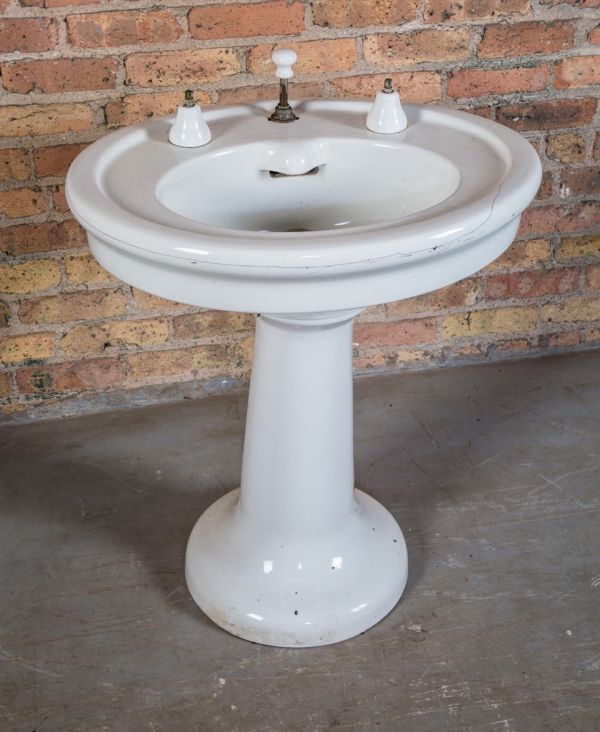If you’re facing the challenge of designing a small bathroom, you may be wondering how you can save space without sacrificing style and functionality. One solution is to choose a pedestal sink, which can provide a sleek and space-saving alternative to traditional vanity cabinets.
In this article, we’ll explore the benefits of pedestal sinks in small bathrooms and provide some tips for choosing and installing this bathroom fixture.

Benefits of Pedestal Sinks
Pedestal sinks are a popular choice for small bathrooms because they take up minimal floor space while still providing essential functions like hand washing and tooth brushing. This is especially useful in bathrooms with limited square footage, where a bulkier vanity cabinet may make the room feel cramped and cluttered.
In addition to their space-saving qualities, pedestal sinks can also provide a stylish and elegant focal point in your bathroom. They come in a variety of shapes, sizes, and styles, so you can choose one that complements the overall design of your bathroom and adds a personalized touch.
Choosing a Pedestal Sink
When choosing a pedestal sink for your small bathroom, there are several factors to consider. First, think about the size of your bathroom and how much space you have available. Make sure to measure the area where you plan to install the sink to ensure that it fits comfortably and doesn’t impede traffic flow.
Next, consider the style and design of the sink. There are many different styles available, from classic and traditional to modern and contemporary. Think about the overall design of your bathroom and choose a sink that complements the other fixtures and finishes in the space.
Finally, consider the material and finish of the sink. Porcelain is a classic choice that provides a timeless and traditional look, while materials like cast iron and stone can offer unique style and durability. Finishes like matte black and polished chrome provide a contemporary look that can tie together other design elements in the bathroom.
Installation Tips
Installing a pedestal sink can be a bit trickier than installing a traditional vanity cabinet, so it’s important to follow some specific steps. First, turn off the water supply to the sink and drain any remaining water. Then, remove the old sink and clean the area where the new sink will be installed.
Next, install the sink’s bracket onto the wall, making sure it’s level and secure. Carefully place the sink onto the bracket and attach it with the provided hardware. Finally, connect the plumbing fixtures and turn on the water supply to ensure that everything is working properly.
Maintenance and Care
To keep your pedestal sink looking its best, it’s important to follow some basic maintenance and care tips. Use a soft cloth or sponge and a mild cleanser to wipe down the sink regularly, and avoid using harsh abrasive cleaners that can scratch the surface.
If you have hard water, you may need to clean your sink more frequently to prevent mineral buildup. You can use a solution of vinegar and water to remove mineral deposits and keep your sink looking sparkling clean.
In conclusion, a pedestal sink is an excellent choice for small bathrooms that need a space-saving solution without compromising style and functionality. By choosing the right size, style, and material, and following proper installation and maintenance procedures, your pedestal sink can provide a beautiful and practical addition to your bathroom for years to come.